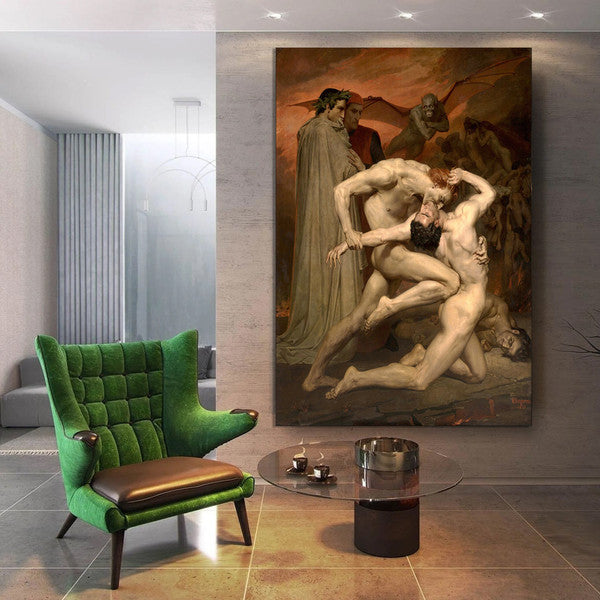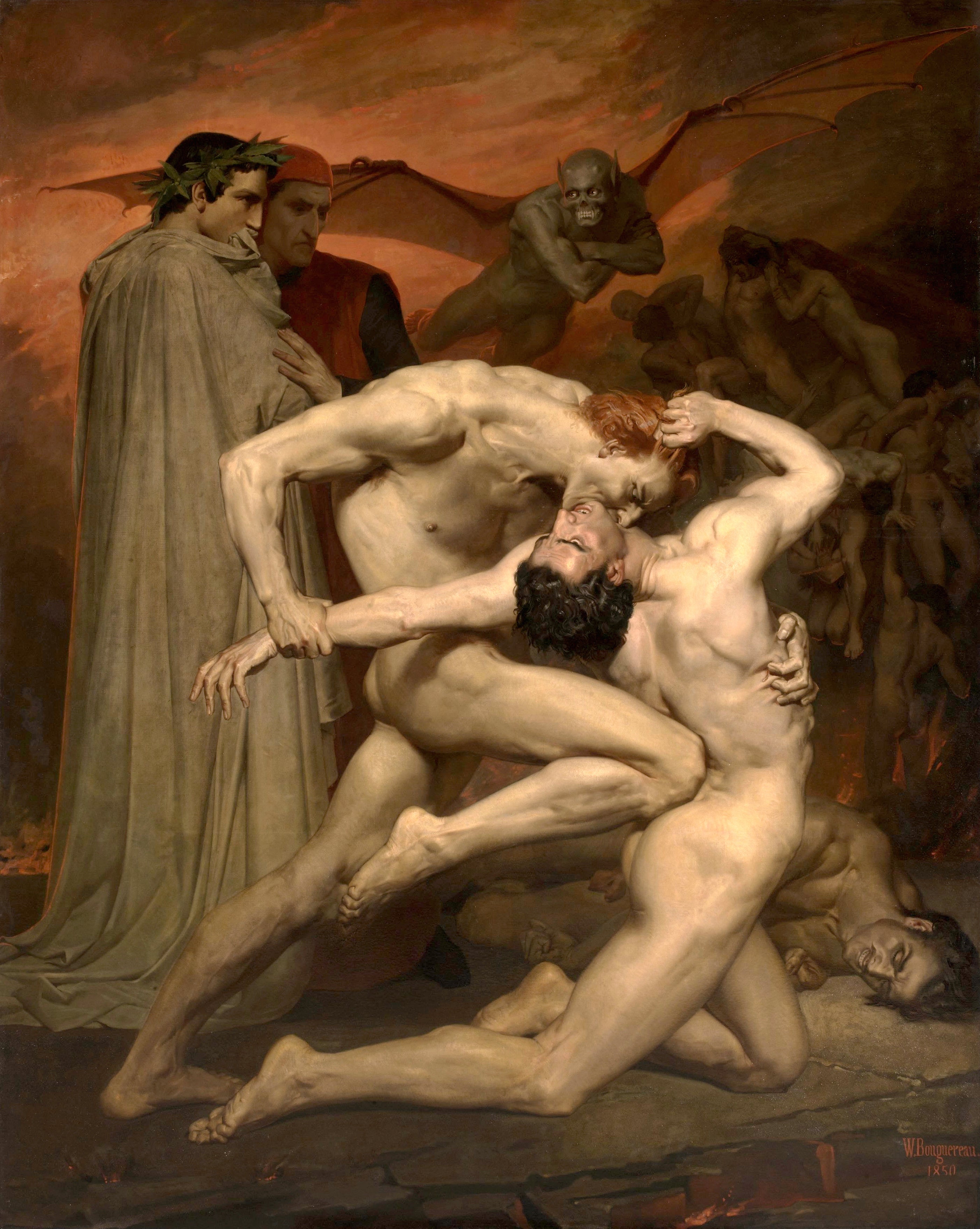Description
The painting Dante and Virgil in Hell by William-Adolphe Bouguereau is a stunning work of art depicting the two literary characters from Dante Alighieri's "Divine Comedy" as they walk through Hell.
Unlike his usual works of art, in Dante and Virgil Bouguereau describes a totally different atmosphere.
In this famous painting the artist depicts a scene from a classic poem written by Dante Alighieri in 1300 in which Dante is taken to hell by the dead poet Virgil.
This painting is inspired by a brief scene, set in the eighth circle of hell, the circle of counterfeiters and counterfeiters. There, Dante is accompanied by Virgil, as he observes a fight between two damned souls: Capocchio, a heretic and alchemist. attacked and bitten on the neck by Gianni Schicchi, who had usurped the identity of a dead man to fraudulently claim his inheritance.
The painting was created in 1850, when Bouguereau was only 25 years old. Despite his youth, the painting shows great technical and artistic mastery, demonstrating the talent and skill of the young artist.
Bouguereau was influenced by the Italian masters of the Renaissance, and in particular by the work of Raphael and Michelangelo. This is reflected in his realistic depiction of the characters and the precision with which he has depicted the landscape and architecture of Hell.
The painting is a work of neoclassical art, which is reflected in the balance and proportion of the composition, as well as the emphasis on clarity and precision. These characteristics are typical of this artistic movement, which was characterized by the search for perfection and ideal beauty.
The work has been the subject of interpretation by art critics and historians, who have suggested that Bouguereau was interested in exploring the themes of death and religion in this work. It has also been noted that the painting is a reflection of the 19th century fascination with Italian art and culture, seen in the detailed depiction of the landscape and architecture of Hell.
Dante and Virgil in Hell is a stunning work that showcases the young Bouguereau's skill and talent, as well as his fascination with Italian culture and religion.
A lesser-known aspect of William-Adolphe Bouguereau's painting "Dante and Virgil in Hell" is the way it reflects the cultural and artistic tension of its time. This work, made in 1850, coincides with a transitional period in the history of art, just before the rise of Impressionism and other forms of modern art.
Bouguereau, being an advocate of academic art, was in an interesting position at this time of change. Although his work was highly valued for its impeccable technique and adherence to classical norms, it also faced criticism from those seeking to innovate and break with established artistic traditions.
"Dante and Virgil in Hell" is a perfect example of Bouguereau's technical mastery and commitment to realism and anatomical precision. However, at the same time, this work does not experiment with new techniques or styles that were emerging at the time. This places it at an interesting middle ground in art history, representing both the pinnacle of academic art and a prelude to the more revolutionary artistic movements that were to come.
Dante and Virgil in Hell is ranked no. 64 on the list of famous paintings






